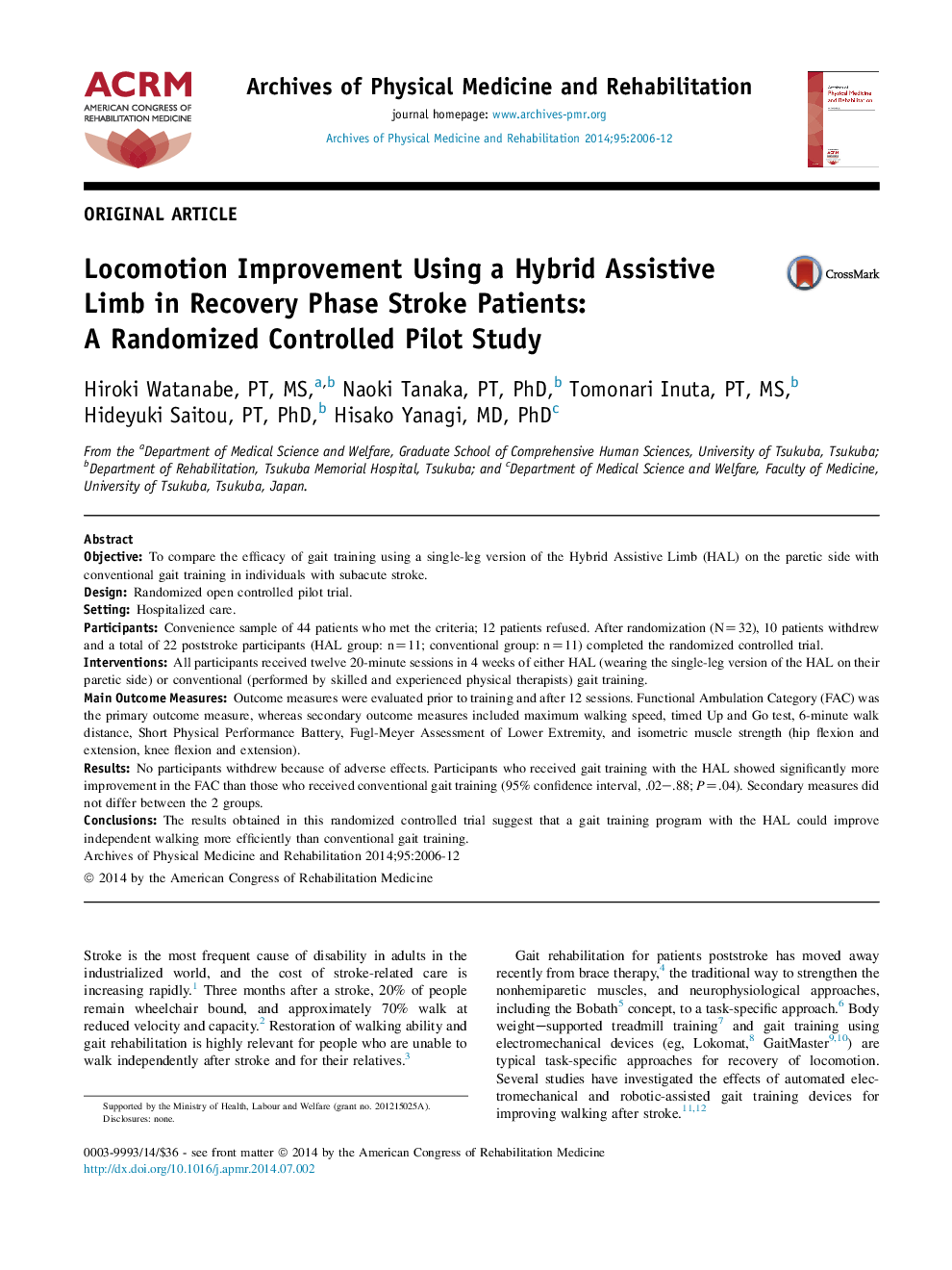| Article ID | Journal | Published Year | Pages | File Type |
|---|---|---|---|---|
| 3448573 | Archives of Physical Medicine and Rehabilitation | 2012 | 7 Pages |
ObjectiveTo compare the efficacy of gait training using a single-leg version of the Hybrid Assistive Limb (HAL) on the paretic side with conventional gait training in individuals with subacute stroke.DesignRandomized open controlled pilot trial.SettingHospitalized care.ParticipantsConvenience sample of 44 patients who met the criteria; 12 patients refused. After randomization (N=32), 10 patients withdrew and a total of 22 poststroke participants (HAL group: n=11; conventional group: n=11) completed the randomized controlled trial.InterventionsAll participants received twelve 20-minute sessions in 4 weeks of either HAL (wearing the single-leg version of the HAL on their paretic side) or conventional (performed by skilled and experienced physical therapists) gait training.Main Outcome MeasuresOutcome measures were evaluated prior to training and after 12 sessions. Functional Ambulation Category (FAC) was the primary outcome measure, whereas secondary outcome measures included maximum walking speed, timed Up and Go test, 6-minute walk distance, Short Physical Performance Battery, Fugl-Meyer Assessment of Lower Extremity, and isometric muscle strength (hip flexion and extension, knee flexion and extension).ResultsNo participants withdrew because of adverse effects. Participants who received gait training with the HAL showed significantly more improvement in the FAC than those who received conventional gait training (95% confidence interval, .02–.88; P=.04). Secondary measures did not differ between the 2 groups.ConclusionsThe results obtained in this randomized controlled trial suggest that a gait training program with the HAL could improve independent walking more efficiently than conventional gait training.
